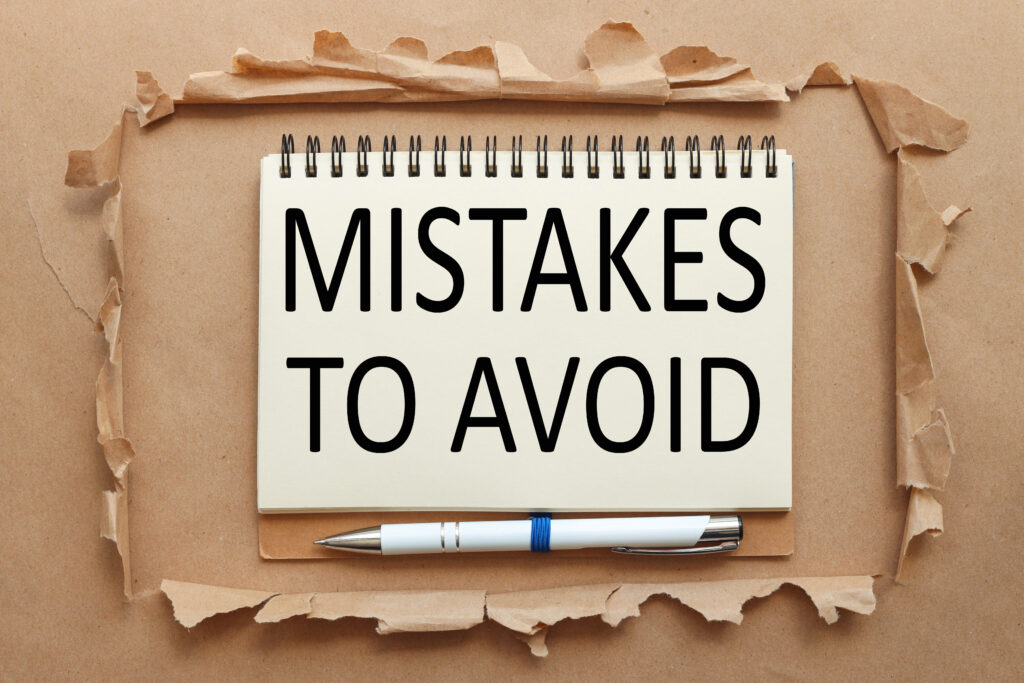10 Common Tax Filing Mistakes

As this year’s tax deadline approaches, we though it would be a good idea to share 10 common filing mistakes. The American Institute of Certified Public Accountants (AICPA) reminds taxpayers of 10 of the most common mistakes made each year by individual taxpayers on their federal tax returns. These avoidable errors can affect your tax bill, delay the processing of your return and draw the attention of the Internal Revenue Service.
Mistake #6: Failing to Document Charitable Donations
For charitable donations of $250 or more, written acknowledgment from the charity is required. A canceled check is not sufficient. If your gift was one of property rather than cash, the acknowledgment must describe the property. When your noncash contribution exceeds $500, you also are required to file IRS Form 8283, Noncash Charitable Contributions, giving details of the donation.
Mistake #7: Omitting Social Security Numbers of Dependents
You MUST include on your return the Social Security number for all dependents. Also, to claim a child or dependent care credit, you must complete Form 2441 and indicate the care giver’s name, address and taxpayer identification or Social Security number.
Mistake #8: Making Math Miscalculations When Filing
Review your return to make sure that your math is correct. If you find a mistake, remember to recalculate other figures that are affected by the error.
Mistake #9: Failing to Calculate the Alternative Minimum Tax (AMT)
With every passing year more and more taxpayers discover, often to their great surprise, that they are subject to the alternative minimum tax (AMT). But many of the 16 million taxpayers who are predicted to become subject to the AMT for the first time over the next two years will not fill out the AMT form 6251 because they think it is only applicable to the very wealthiest individuals and couldn’t possibly apply to them. The result can be a nasty note from the IRS informing them they owe more money and, of course, interest on the underpayment.
Mistake #10: Assuming Itemizing Deductions Will Reduce Tax Bite the Most
Many taxpayers assume that itemizing deductions is going to result in the lowest federal obligation. However, that may not be true. For example, if you’ve paid down most of the interest on your home mortgage, which is the largest deduction most filers have, you may be better off taking the standard deduction. The standard deduction increases each year because it’s indexed for inflation. For 2006 returns, the standard deduction for married taxpayers filing jointly is $10,300, and for single it is $5,150.

We hope you found this article about “10 Common Tax Filing Mistakes” helpful. If you have questions or need expert tax or family office advice that’s refreshingly objective (we never sell investments), please contact us or visit our Family office page or our website at www.GROCO.com. Unfortunately, we no longer give advice to other tax professionals gratis.
To receive our free newsletter, contact us here.
Subscribe to our YouTube Channel for more updates.
Considerately yours,
GROCO, GROCO Tax, GROCO Technology, GROCO Advisory Services, GROCO Consulting Services, GROCO Relationship Services, GROCO Consulting/Advisory Services, GROCO Family Office Wealth, and GROCO Family Office Services.

Alan L. Olsen, CPA, Wikipedia Bio

Proud sponsor of the AD Show.

Is Accounting Boring?
Is Accounting Boring? By William Brighenti I’ve noticed on Twitter a bunch of tweets from younger people complaining that accounting is boring. This may very well be true for those who are not accountants. Non-accountants include those individuals who once loved accounting until they took intermediate accounting in college and then switched their major to…
Business Plan
Business Plan A business plan precisely defines your business, identifies your goals, and serves as your firm’s resume. The basic components include a current and pro forma balance sheet, an income statement, and a cash flow analysis. It helps you allocate resources properly, handle unforeseen complications, and make good business decisions. Because it provides specific…
Choosing a Legal Form for Your Business
Choosing a Legal Form for Your Business In starting a small business, one of the first questions you should ask is what form of legal entity you should use or “How should I organize my business?” Also, as your business grows and changes, you should from time to time ask yourself whether the entity you…
Drafting a Partnership Agreement
Drafting a Partnership Agreement If you decide to organize your business as a partnership, be sure you draft a partnership agreement that details how business decisions are made, how disputes are resolved, and how to handle a buyout. You’ll be glad you have this agreement if for some reason you run into difficulties with one…




